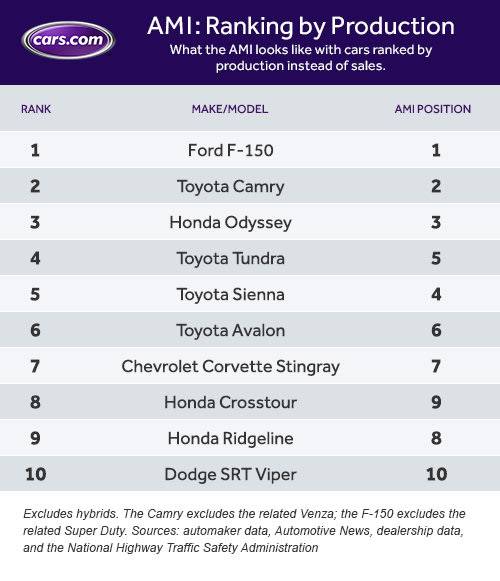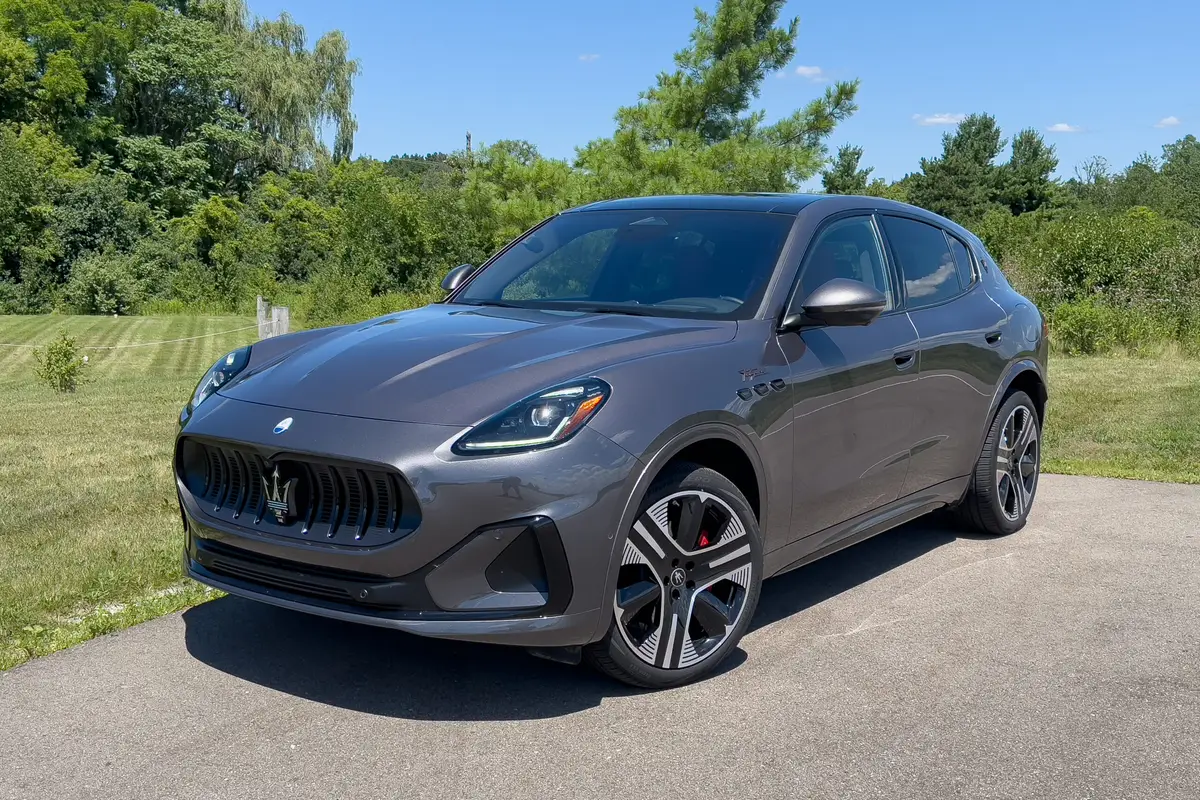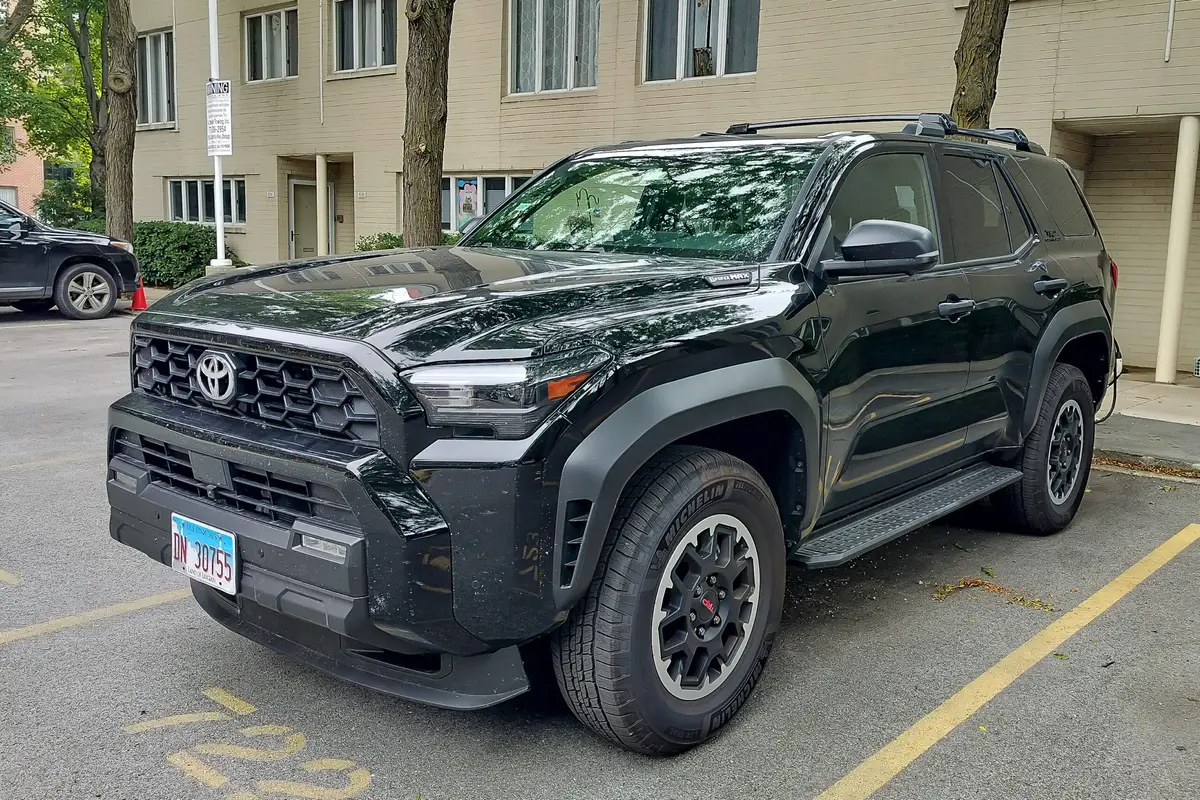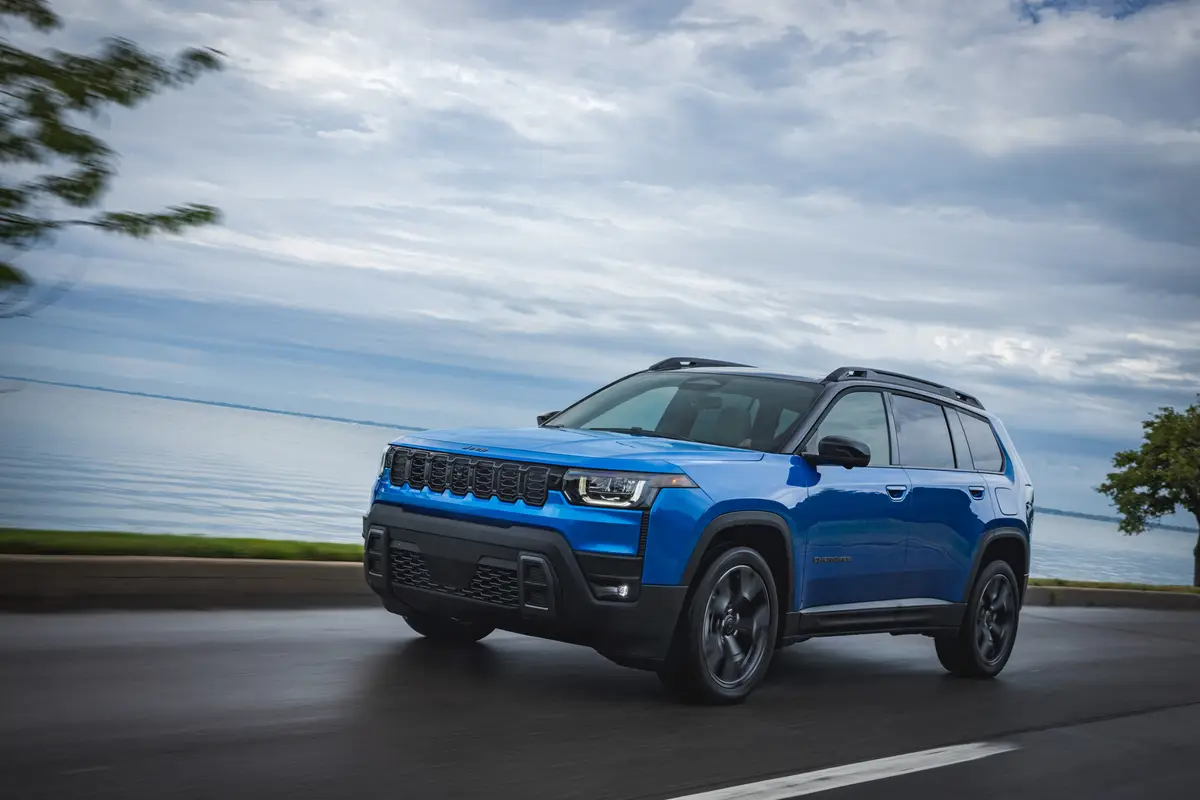2014 American-Made Index: Fewest Cars Ever


A steady decline in cars with high domestic-parts content had us wondering when the American-Made Index would have fewer than 10 cars. This year, that nearly happened. For the 2014 model year, there are no “honorable mentions”; all 10 that were eligible made the list. In fact, just 13 models built in the U.S. reported domestic-parts content of 75 percent or higher, but three of those are going to be discontinued, meaning they’re disqualified from our list. Three model years ago, 30 cars met the 75 percent threshold.
Cars.com Releases the 2014 American-Made Index
It’s a clear trend, and it comes despite increased domestic car production. In 2013, automakers built 11.14 million vehicles in the U.S., including passenger cars and medium/heavy-duty trucks, according to Automotive News. That’s up 7 percent over 2012, and it came as production stayed roughly flat in Mexico and fell 3.7 percent in Canada. Through the first five months of 2014, production increased 4.4 percent in the U.S.
You’d think all of that would contribute toward a banner crop of cars with high percentages of domestic content, but it’s not the case. For the 2014 model year, 90 models were built in the U.S. with an average domestic-parts content (not sales-weighted) of 57.1 percent, according to Cars.com’s analysis of National Highway Traffic Safety Administration data. That decline has been steady: In the 2013 model year, 93 U.S.-built cars averaged 57.7 percent domestic content. In the 2012 model year, 86 U.S.-built cars averaged 60.5 percent domestic content.
“Even for vehicles whose final assembly is here, the components increasingly are coming from all over the place, and that’s especially true for anything electronic,” explained Ed Kim, vice president of industry analysis at AutoPacific. “Modern vehicles are so electronic nowadays. There are computers and electronic components that control every aspect of the vehicle. North America is not where that stuff is built.”
Indeed, the American Automobile Labeling Act passed by Congress in 1992 requires automakers to rate every model in terms of the percentage of U.S. and Canadian parts (considered under AALA regulations as “domestic” parts) by cost. And those electronic components can be costly. Consider: The 2014 Toyota Camry is rated at 75 percent domestic content; the electronics-heavier Camry Hybrid has a 35 percent rating. Save a handful of imports, both cars are overwhelmingly built here. Meanwhile, the two U.S.-built 2014 models with the highest domestic content (at 80 percent) are the Chevrolet Express and GMC Savana 1500. Both are relatively low-tech full-size vans.
“Production [in North America] is up; automakers are making more cars,” Kim said. “But the parts are coming from an increasingly diverse array of places.”
Automakers are also building vehicles on global platforms. Ford’s One Ford strategy has resulted in cars like the current Focus.
“One Ford was all about leveraging their global resources,” Kim said. It’s “not just Ford, but all of the Big Three have become dramatically more globalized over the last five, 10 years.”
It’s true. Today, Chevrolet shoppers can buy a Cruze whether they’re in South Carolina or South Africa. Jeep shoppers can buy a Cherokee in Pittsburgh or Paris.
The continuing drop in domestic parts is “here to stay for the long term,” Kim said. Barring a reversal, it’s likely an AMI in the near future won’t have 10 cars.
Honda and Toyota made seven of the 10 models that made the list, but that doesn’t necessarily make either automaker more “American.” Of the 70 U.S.-built cars with reported domestic content of 50 percent or higher, the Detroit Three and California-based Tesla are responsible for 41 models, according to Cars.com’s analysis of NHTSA data for the 2014 model year. Toyota, Honda, Nissan and Hyundai-Kia produce just 29. Then there’s employment. A Cars.com study in 2012 found that despite their workforce declining by half from the early 2000s, the Detroit Three directly employed nearly three times the U.S. workforce of Toyota, Honda and Nissan. The Detroit Three also sold more cars in 2012 than Toyota, Honda and Nissan, but by a far lower amount, only 39.7 percent.
That’s why you should always keep in mind the American-Made Index rates the domestic nature of specific models, not automakers.
Ranking by Production
The AMI rates cars based on their domestic-parts content and where they’re built. It also incorporates sales for cars, excluding any portion built outside the U.S., as vehicle sales help drive employment. But a recent rise in exports throws a spanner in the works. In January 2014, Honda said it exports more cars from the U.S. than it imports from Japan. And BMW says it exports more than 70 percent of the X3, X5, X6 and soon-to-come X4 SUVs from a South Carolina plant to more than 140 countries. Indeed, the automaker has built 146,081 of the SUVs in South Carolina in the first five months of 2014, according to Automotive News. Shoppers in the U.S., meanwhile, have bought just 39,934 X3s, X5s and X6s.
The Department of Commerce classifies BMW as the largest U.S. vehicle exporter by value to countries outside North America, but none of the automaker’s South Carolina-built SUVs has more than 30 percent domestic content. Still, it presents an interesting point. U.S. sales alone may not always reflect employment, so what happens if you rank by the number of cars coming off the factory line? We’ve looked into this before. This year’s AMI changes if you measure production instead of sales, but not by much:

Cars.com photo by Kelsey Mays; Cars.com graphic

Former Assistant Managing Editor-News Kelsey Mays likes quality, reliability, safety and practicality. But he also likes a fair price.
Featured stories




